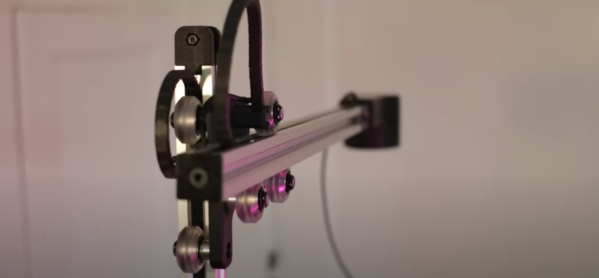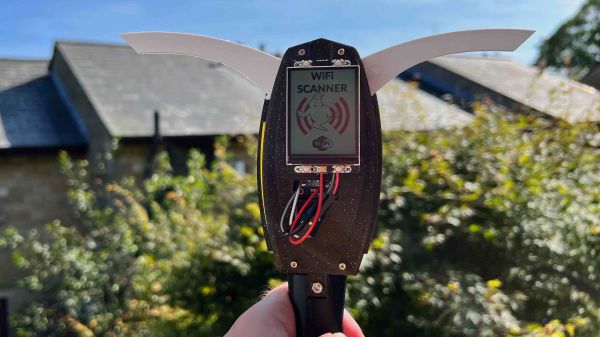[Steven Bennett] is so fond of Dyson’s new Lightcycle lamp that he’s decided to clone his own version in the spirit of the original. Dyson, however, knows what makes their lamp so special — so much that they patented their technique for tucking away the power wiring. Undaunted, [Steven]’s latest challenge has been to create a cable management solution that captures the elegance of the original without making a flat-out duplicate.
[Steven]’s latest update starts with the details of the original model’s patent. In a nutshell, Dyson’s elegance comes from both a flat cable (a flex PCB, perhaps?) and a magnetic interface that transfers power between the two primary structural beams. The latter half discusses [Steven]’s alternate solution: a miniature drag chain that can be 3D printed to arbitrary lengths. Like the flat flexible cable, this cable rides in the groove of the lamp’s two structural beams; but unlike the original, it spools outwards into a hoop on one end of its travel length. Overall [Steven] is quite happy with this result, and we think this solution gives the lamp a charm that’s distinctly original.
Capturing the design essence doesn’t just stop at wire management though. Have a look at some previous video logs in the series to get a sense of some of the other challenges faced in both heat dissipation and mechanical feel.
Wire management, when done well, scratches a design itch somewhere in the back of our heads. If you’re curious for more cable management solutions, have a look at some of these other tricks that use tape measure or involve a DIY coiling method.
Continue reading “DIYson Lamp Hides Cables Between The Seams”


















